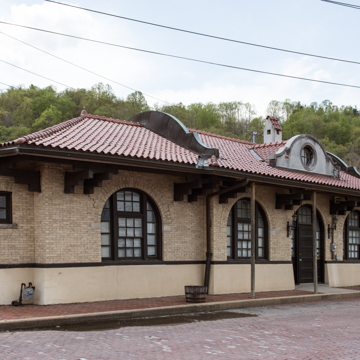Close by the covered bridge, this diminutive Mission Revival train station is one of northern West Virginia's architectural anomalies. Built of pressed buff brick with a battered, pargeted plinth, the one-story building has a hipped roof divided into three sections by protruding parapets, which are actually extensions of interior walls. Their alternating concave and convex profiles, along with similarly treated gable dormers, provide the major allusions to the Mission Revival style. Brackets that might more properly be termed vigas support the recently restored red tile roof. There is even a little pargeted chimney with its own red tile roof. A brick-paved platform and parking area contribute to the period flavor.
Long, a Baltimore architect, designed major stations for the B&O at Grafton and Wheeling, as well as a smaller depot at Belington in Barbour County. He also likely designed the Salem B&O station ( HR30) in neighboring Harrison County. In 1979 the city of Philippi purchased the station, and the Barbour County Historical Society restored it over the next several years. It now houses the society's museum.








